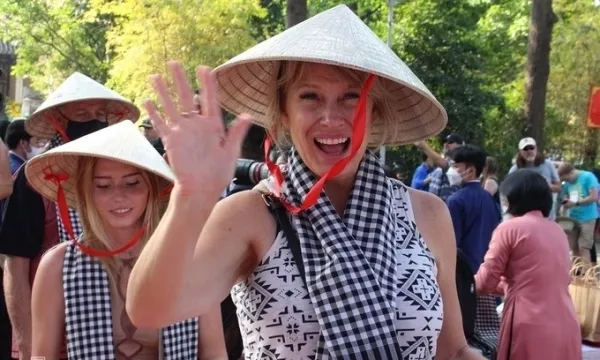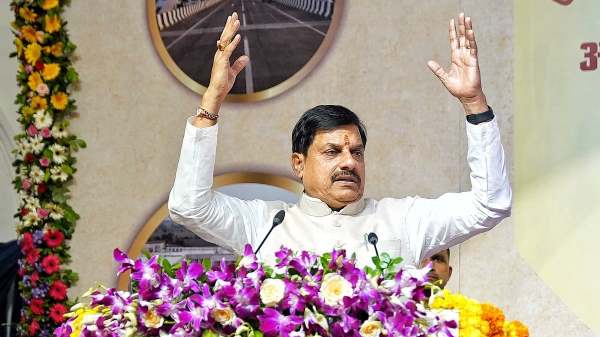
In the 65 years since the inception of its tourism industry Vietnam has become the most popular destination in Southeast Asia after only Thailand and Malaysia.
On July 9, 1960, the Vietnam Tourism Company was founded.
It was a time when the country was still divided, and the tourism industry mainly served visiting foreign delegations and experts, according to the Vietnam National Tourism Administration.
“In the 1970s, there were very few foreign tourists in Hanoi, unlike now when you can see them everywhere,” recalls Vu Thi Khiem, former head of the business department at Hanoi Tourism Corporation (Hanoitourist).
She began working for Hanoitourist in 1972, testing and inspecting the quality of food served to international government delegations during the subsidy years.
Domestic travelers were rare, and international tourists even more so, she adds.
The first days of opening
Even after reunification in 1975 and the launch of the Doi Moi reforms in 1986, the tourism sector remained underdeveloped, with restrictive policies on admitting foreign visitors.
Nguyen Quoc Ky, now chairman of leading tour operator Vietravel, worked for the Ho Chi Minh City Tourism Company (Saigontourist) in the 1980s.
“Back then tourists could hardly travel independently. They had to go through state-owned travel companies such as Saigontourist and Hanoitourist.
“Visitors needed an invitation letter and had to apply for a visa through diplomatic agencies. Itineraries were usually pre-arranged with little flexibility.”
The market relied almost entirely on Eastern European tourists.
Industry pioneers sought to expand Vietnam’s reach by attending tourism fairs in Thailand, promoting the country and working to attract new visitors.
In 1994 the U.S. lifted its embargo on Vietnam, marking a turning point for tourism.
In the following years Vietnam rapidly integrated internationally by joining ASEAN, APEC and later the WTO.
Former ASEAN director general Do Ngoc Son says Vietnam’s tourism benefited in two ways: visa exemption policies within the bloc made entry easier, and the country’s status as a latecomer sparked curiosity that drew travelers from across Southeast Asia.
Vietnam received 250,000 international visitors in 1990, most of them business travelers. By 1995, the first full year after the U.S. embargo was lifted, the number surged to 1.35 million.
Aviation was a challenge as Vietnam had limited direct international connections. While an aviation agreement was signed with the U.S. in 2003, it took nearly two decades before the first direct commercial flight — between HCMC and San Francisco — was launched in 2021, delayed as it was by legal barriers and high operating costs.
More than 20 years after the embargo was lifted, the tourism industry began reaping the rewards of diplomatic efforts and economic openness. A milestone came in 2016, when international arrivals hit 10 million for the first time.
Then the golden age arrived, in 2019, when 18 million international visitors came and tourism accounted for more than 9% of GDP.
Annual growth averaged 22.7%, putting Vietnam among the world’s fastest-growing destinations, according to the World Tourism Organization.
That momentum was abruptly halted by the Covid pandemic.
Border closures and suspended flights stopped travel, dragging the industry back to zero.
Though Vietnam reopened to international visitors on March 15, 2022, the recovery was limited by several key markets like China keeping their borders closed.
Since 2022 the government has steadily expanded its visa relaxation policies, including granting e-visas to travelers from around the world.

There are unilateral visa exemptions for nationals of 24 countries, primarily in Europe but also of other key markets such as Russia, South Korea and Japan.
Pham Hai Quynh, director of the Asian Tourism Development Institute, said Vietnam’s tourism industry has “quickly regained momentum and achieved impressive results,” thanks in part to the open visa policies.
Last year Vietnam received 17.6 million international visitors, the third highest in the region after Thailand’s 35.5 million and Malaysia’s 25 million.
Vietnam’s image is gaining wider recognition among international travelers, with celebrities and billionaires increasingly choosing the country for vacations, leisure and even weddings.
High-profile visitors have included American tech billionaires Bill Gates and Mark Zuckerberg.
The country’s destinations have also earned a slew of honors from prestigious global organizations such as Tripadvisor and Skytrax.
At the 2024 year-end review conference by the Ministry of Culture, Sports and Tourism, Prime Minister Pham Minh Chinh highlighted tourism as a “bright spot” in the country’s economy.
In the first eight months of 2025 there were nearly 14 million international arrivals, a 22% year-on-year rise.
According to Associate Professor Pham Truong Hoang, head of the faculty of tourism and hospitality at the Hanoi National Economics University, the tourism industry has firmly rejoined the race to be among the country’s most important economic sectors.
He said if the 2024 international arrivals growth rate of 20% is sustained, the industry could attract more than 60 million visitors by 2030, well above the 50 million target set in the Vietnam Tourism Development Strategy for 2020–30 despite the pandemic having set back growth by three to four years.
Quynh said Vietnam’s tourism industry still struggles with uneven service quality and limited professionalism, and greater investment is required in specialized training for workers, tour guides and managers and stronger partnerships between tourism schools and businesses to deliver practical, industry-focused programs.
Mark Bowyer, who has followed Vietnamese tourism for 35 years, acknowledged the sector’s remarkable progress but cautioned that rapid development has come at a cost.
Overbuilding and mass tourism are straining natural landscapes and eroding the simple, authentic experiences that once set Vietnam apart, he warned.
Popular destinations such as Sa Pa, Phu Quoc and several coastal areas are being “suffocated” by sprawling resorts, leaving visitors with fewer chances to enjoy a slower pace of life and connect with local communities, he added.
-
Flipkart Reports Losses Of ₹5,189 Crore In FY25

-
Uttar Pradesh News: Raebareli Teachers Protest Supreme Court TET Order, 4 Lakh Demand Exemption, RSM Warns Of Intensified Movement

-
MP CM Mohan Yadav Honours Engineers On Engineer's Day In Bhopal

-
Did Nagma Mirajkar & Awez Darbar Fake Their Relationship On Bigg Boss 19? Natalia Janoszek Reveals - VIDEO

-
Speed skater Anandkumar Velkumar creates history, PM Narendra Modi calls him an ‘inspiration’
